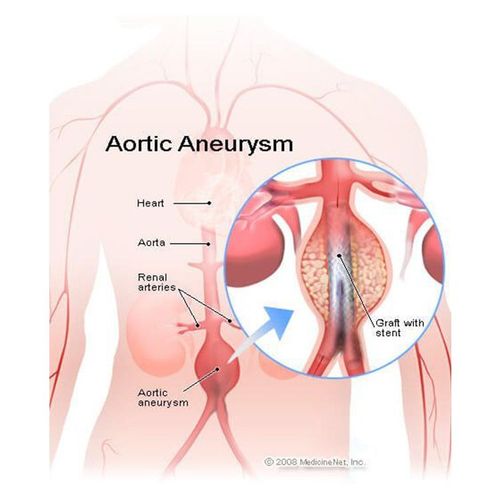An operation using only tiny incisions to repair a potentially fatal weakness in the aorta—the largest artery in the body—produced a lower short-term death rate than conventional surgery, according to a European study. However, the longer-term benefits of the procedure still are not clear, physicians say.
The Study
The trial included 345 patients who had abdominal aortic aneurysms, a bulge in the body's largest heart vessel that can be caused by injury, infection or congenital conditions.
Nearly half of the patients underwent conventional surgery, with the weak spot being patched through a large abdominal incision. The others had a procedure called endovascular repair, in which the weak spot is strengthened by a patch or tube threaded upward from the groin via arteries in the leg. Patients who have endovascular repair leave the hospital faster and have a shorter recovery period.
Eight of the patients who had conventional surgery died in the following month, a mortality rate of 4.6%, according to the report. Only two of those who had endovascular repair died, a mortality rate of 1.2%.
Long-Term Concerns?
"We have answered the obligatory first part of the question whether the results are better at the 30-day mark," says study author Dr. Jan D. Blankensteijn, a professor of vascular surgery at the Radboud University Hospital in the Netherlands. If they weren't better, then the entire business would be over. But it is still necessary, before a widespread change of practice be advised, to evaluate the long-term results."
Dr. Kenneth Ouriel, chairman of surgery at the Cleveland Clinic, who performed endovascular repair on Bob Dole when the former US Senator and 1996 Republican presidential candidate was 77 years old, says the study results do not clinch the case for even the short-term safety of this procedure because the number of patients evaluated was too small to produce definitive statistics.
Nevertheless, Ouriel says, "This is definitely something people should consider. Lots of patients don't think about the long term. We have to wait for the results two, three, five years out."
Blankensteijn says the patients in the study will be followed up for several years to determine if endovascular repair holds up as well as conventional surgery.
Two European registries have reported a higher long-term failure rate—in fact, 10 times higher—for endovascular repair patients than for those who have had conventional surgery.
Watchful waiting, until the picture becomes clearer, is recommended for many people, especially those who have smaller and less dangerous aneurysms, says Dr. Frank A. Lederle, professor of medicine at the Veterans Affairs Medical Center in Minneapolis.
"Now is a very good time to wait," Lederle says. "The technology is improving rapidly and the surgeons are gaining expertise in doing it. The data will be coming out quickly in the next few years. If you can wait a few years, it is probably the smart thing to do."
Medical Considerations
For people who have abdominal aneurysms, Lederle says that factors such as age and other medical conditions should be considered before deciding which procedure might be better.
"If you are a patient with not a very long term of life ahead a 70-year-old male with cardiac problems with a probable survival time of three to five years-endovascular repair is the sensible choice," he advises. "Who cares about failure five or six years from now if you have only three years to live?
But a 60-year-old, relatively healthy man should be seriously concerned about the durability of the graft. "For him, there would be a strong argument for conventional repair," Lederle adds.
